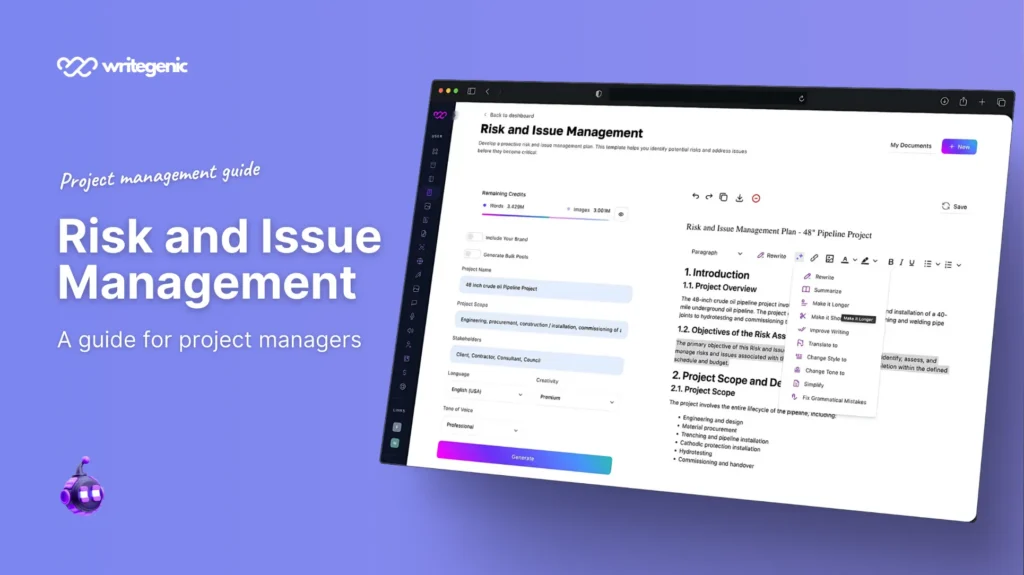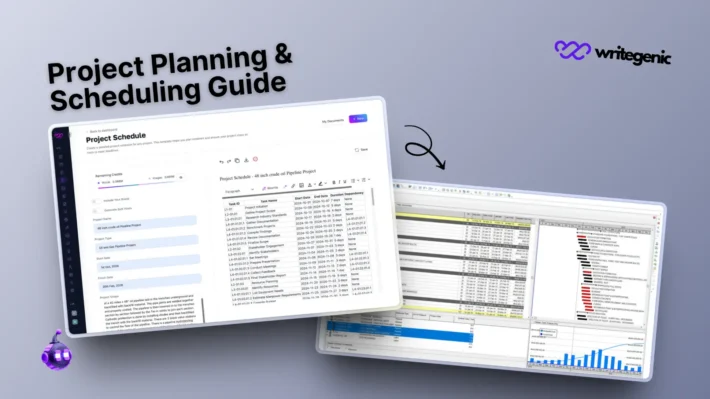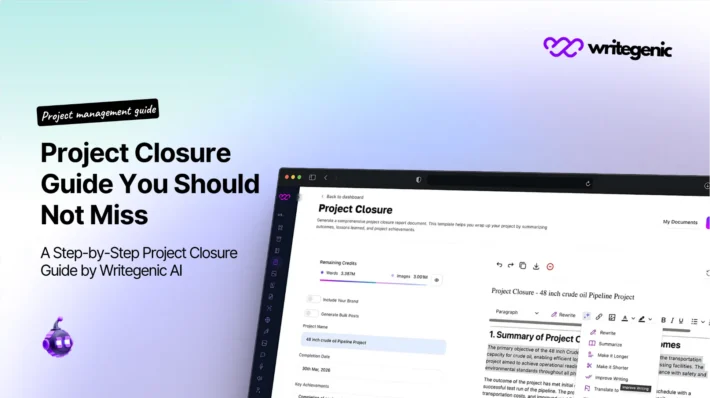Risk and Issue Management: A Guide for Project Success

Risk and issue management plays a crucial role in achieving successful project delivery in the current dynamic business world. It allows project managers to identify any possible issues (risks) and appropriately address the current challenges (issues), ensuring that the project is on schedule and within budget. Differentiating between risk and issue in project management, and learning how to manage them, will enable you to make better decisions, alleviate unnecessary delays, and create better project outcomes.
This guide explores the essence of risk and issue in project management, the strategy of risk management, and presents pragmatic steps in establishing a robust issue management process.
Table of Contents
What Is Risk and Issue Management?
Risk and issue management is the art of project managers going ahead of a project and pulling a project back when going off track. Although the terms of risks and issues seem to be referred to each other, they do not mean the same thing:
Issue management involves determination of the problem, its analysis and its solution on projects that have already taken place. These are the present barriers that should be addressed as rapidly as possible.
Risk management, in its turn, addresses the problems of the potential problems, i.e. uncertain events that might happen or not. This is with an aim of foreseeing and reducing those risks, before they become problems.
The two processes are meant to minimize the adverse effect on the performance of the project and aid in improving the decision-making process.
Risk vs Issue: What’s the Difference?
Although both risks and issues may kill a project, they are not the same and they should be approached differently.
Risk in Project Management
A risk is something which is not certain, it can occur or not. It is something that might adversely (or in some cases favorably) impact on the project in case it happens. As an illustration, when your project relies on a vendor, there is a possibility that the vendor may be delayed. This can be prepared in advance by finding alternative suppliers or putting in a cushion in the calendar.
Issue in Project Management
An issue on the other hand is what has already occurred and necessitates correction right now. In case your vendor has already passed their date of delivery then it is no longer a risk, it is now a problem that is affecting your schedule.
When teams get a clear picture of the difference between risk and issue, they will be in a position to know which is preventable and which should be dealt with immediately.
Understanding Risk Management Strategies
In order to successfully handle the risk, the project managers are expected to identify the risk, and then decide how to approach it. Four of the commonly held risk management strategies are presented as follows:

1. Risk Avoidance
This includes modification of the project plan so as to eliminate the risk. As an example, the decision to avoid a technology which has not been tested yet can eliminate some technical risks.
2. Risk Mitigation
In this plan, an effort is to cut the likelihood or effects of a risk. As an example, when training new members of a team is provided, chances of making mistakes in the execution tend to be lowered.
3. Risk Transfer
Sometimes a solution can be the transfer of risk to a third party (out-sourcing, rather than insurance). This does not remove the risk, but re-assigns blame.
4. Risk Acceptance
All risks are not avoidable and transferable. Some are minor and it is always advisable to put them aside and accept them. Here monitoring of the risk and a response plan are necessary in case it occurs.
Project managers are in a position to manage risk visionarily and confidently as they embrace the uncertainty of the project by knowing how to manage risk using risk management strategies to ensure that the situation that might have caused the project derailment becomes a manageable situation.
Issue Management Process in Project Management
While risk and issue management involves both proactive and reactive approaches, risk management is proactive, and issue management is reactive—but equally important. A well-defined issue management process ensures problems are handled quickly and don’t snowball into major project failures.
Below are a few details into the five stages of proper issue management:
1. Identification
Identify that a problem is there. Promote the approach of reporting and logging issues in one of the systems as soon as possible. This generates a transparency culture.
2. Assessment
Assess the level and the effect of the problem. Find out whether it impacts on timelines, resources, scope, or quality. Identify issues according to the priority (critical, high, medium, low).
3. Escalation
In case you find that the problem is one that the team cannot fix, refer it to the project sponsors or senior management. Prearrange the procedures of escalation to minimize time lag.
4. Resolution
Assign a person in the team to solve the problem and corrective measures are taken in regard to the problem and the problem should never be present in regard to the project. Write down the steps of resolution.
5. Documentation
There is always something to learn out of every problem. Note the problem and its solution down in your lessons-learned log so that you may plan your future projects better.
As soon as an efficient issue management process is implemented, the accountability is increased, the timely making of sound decisions becomes the norm and there are fewer mistakes made.
How to Implement Effective Risk and Issue Management
When projects are built with risk and issue management embedded into them, they are not a side activity. This is how you can bring it into practice:
Establish a Centralized Log
Create a collaborative risk and issue log (through Excel, Jira, ClickUp, Writegenic AI or other PM tools) that can be used by all team members to follow up on progress and make updates and response co-working.
Assign Clear Ownership
All the risks and issues should have an owner who will monitor or resolve them. Ownership brings responsibility and reduces the time of response.
Hold Regular Review Meetings
Address the risk and issue log at weekly meetings. Read status updates, evaluate changes of priorities, and make decisions to take.
Use Visual Aids
Gantt charts, dashboards and some color-coded heat maps will enable you to see the big picture and determine how and where your project is healthy without having to not understand.
Communicate with Stakeholders
Inform stakeholders about primary risks and problems, primarily changes that impact cost, schedule, or scope. An open communication generates trust and it enables one to act at the correct time.
Embarking on risk and issue processes in your project management framework ensures that issues are discovered early, addressed in a planned manner, and addressed without causing mayhem.
Conclusion
Risk and issue management does not only involve having a plan but being ready to adapt, react, and recover. By understanding the difference between risk and issue, taking appropriate risk management strategies and establishing a clear issue management process, you are providing your projects a solid path towards success.
In the modern environment in which things are changing, risks are bound to occur and problems are bound to pop forth. However, with the proper attitude and management tools, you can be patient in both and can deliver a good project, which comes up to expectation, time frame, and budget.
FAQs about Risk and Issue Management
What is the difference between risk and issue management in project management?
A risk is a future occurrence that can affect the project in future whereas issue is an existing problem that is already affecting the project.
What is issue management?
The process of identifying, analyzing, escalating and fixing the existing problems that affect the flow of the project is called issue management.
What are risk management strategies?
Risk avoidance, mitigation, transfer and acceptance are generally used. Both of them are used to control or minimize possible adverse effects to a project.
Why is it important to distinguish risk vs issue?
It assists project managers in implementing the right strategy, which is planning and prevention of risks and immediate response to issues in order to carry out the project without any trouble.


